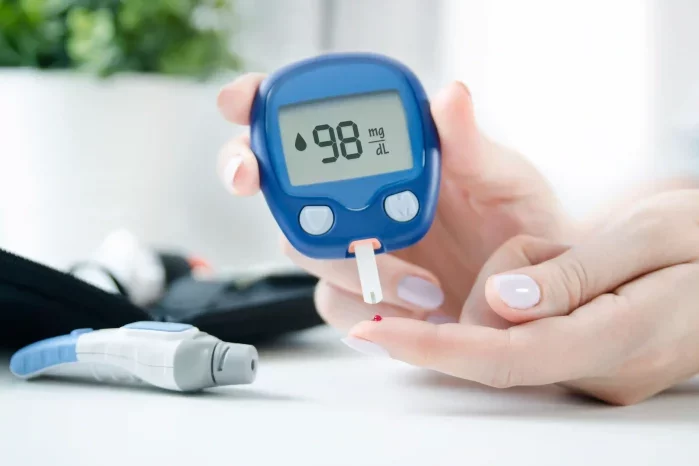Diabetes is a complex metabolic disorder characterized by elevated blood glucose levels due to either insufficient insulin production, ineffective insulin action, or both. Understanding the specific type of diabetes is crucial for determining the appropriate treatment and management strategies. This article explores the various types of diabetes, diagnostic criteria, distinguishing features, and diagnostic tests used to differentiate between them.
Understanding Diabetes Types
Diabetes mellitus encompasses several types, each with distinct etiologies, clinical presentations, and management approaches. The main types include:
Type 1 Diabetes (T1D):
Type 1 diabetes results from autoimmune destruction of insulin-producing beta cells in the pancreas, leading to absolute insulin deficiency. It often develops during childhood or adolescence but can occur at any age. Individuals with T1D require lifelong insulin therapy for blood glucose management.
Type 2 Diabetes (T2D):
Type 2 diabetes is characterized by insulin resistance, where cells fail to respond effectively to insulin, combined with relative insulin deficiency. It typically develops in adults, although rising rates among children and adolescents are observed due to increasing obesity rates and sedentary lifestyles.
Gestational Diabetes Mellitus (GDM):
Gestational diabetes occurs during pregnancy when insulin resistance increases, and pancreatic beta cells cannot compensate adequately. It increases the risk of complications for both the mother and the baby but often resolves after childbirth.
Other Types of Diabetes:
Other less common types include monogenic diabetes syndromes (e.g., MODY – Maturity-Onset Diabetes of the Young), secondary diabetes due to other medical conditions (e.g., pancreatic disease, certain medications), and diabetes associated with specific genetic syndromes.
Diagnostic Criteria and Distinguishing Features
1. Type 1 Diabetes (T1D):
Etiology: Autoimmune destruction of pancreatic beta cells.
Clinical Presentation:
- Rapid onset of symptoms such as excessive thirst, frequent urination, weight loss, fatigue.
- Often diagnosed in children, adolescents, or young adults.
Laboratory Findings:
- Presence of autoantibodies (e.g., anti-GAD, anti-IA2, anti-insulin antibodies).
- Low or undetectable C-peptide levels indicating low insulin production.
2. Type 2 Diabetes (T2D):
Etiology: Insulin resistance with relative insulin deficiency.
Clinical Presentation:
- Gradual onset of symptoms often related to obesity, sedentary lifestyle, and aging.
- Frequently diagnosed in adults over 40, but increasingly seen in younger individuals.
Laboratory Findings:
- Elevated fasting blood glucose (≥126 mg/dL) or 2-hour postprandial glucose (≥200 mg/dL) on more than one occasion.
- Normal to elevated C-peptide levels indicating insulin resistance with some insulin production.
3. Gestational Diabetes Mellitus (GDM):
Etiology: Increased insulin resistance during pregnancy.
Clinical Presentation:
- Typically diagnosed during routine screening between 24-28 weeks of pregnancy.
- Often asymptomatic; some women may experience increased thirst, frequent urination.
Diagnostic Criteria:
- Elevated glucose levels on oral glucose tolerance test (OGTT): fasting ≥92 mg/dL, 1-hour ≥180 mg/dL, 2-hour ≥153 mg/dL.
4. Other Types of Diabetes:
Monogenic Diabetes (MODY):
- Caused by mutations in specific genes affecting beta cell function.
- Typically diagnosed in young adults with a family history of diabetes.
- Genetic testing is necessary for diagnosis.
Secondary Diabetes:
- Due to other medical conditions (e.g., pancreatic disease, endocrine disorders) or medications (e.g., corticosteroids).
- Diagnosis involves identifying and treating the underlying cause.
Diagnostic Tests for Differentiating Diabetes Types
Autoantibody Testing:
Detects autoantibodies (e.g., anti-GAD, anti-IA2, anti-insulin antibodies) associated with autoimmune destruction of beta cells in T1D.
C-peptide Testing:
Measures C-peptide levels to assess endogenous insulin production:
Low levels suggest little to no insulin production (T1D).
Normal to elevated levels indicate insulin resistance with varying degrees of insulin secretion (T2D).
Genetic Testing:
Used to diagnose monogenic forms of diabetes such as MODY, which are caused by specific genetic mutations affecting beta cell function.
Oral Glucose Tolerance Test (OGTT):
Assesses glucose tolerance and can help diagnose T2D or GDM based on glucose levels at fasting and at 1-2 hours after consuming a glucose solution.
HbA1c Testing:
Provides an average of blood glucose levels over the past 2-3 months.
Used for diagnosis and monitoring of diabetes but does not differentiate between diabetes types alone.
Clinical Evaluation and Considerations
- Medical History: Includes symptoms, age at onset, family history of diabetes, previous pregnancy history (for women), and medical conditions.
- Physical Examination: Evaluates weight, blood pressure, signs of insulin resistance (e.g., acanthosis nigricans), and complications of diabetes (e.g., neuropathy, retinopathy).
- Lifestyle and Risk Factors: Assesses diet, physical activity level, obesity, and other risk factors influencing diabetes development and management.
- Comprehensive Assessment: Combines diagnostic tests, medical history, physical examination, and clinical judgment to determine the type of diabetes accurately.
Management Strategies Based on Diabetes Type
- Type 1 Diabetes: Requires lifelong insulin therapy, monitoring blood glucose levels, carbohydrate counting, regular physical activity, and continuous education and support.
- Type 2 Diabetes: Initially managed with lifestyle modifications (diet, exercise), oral medications (e.g., metformin, sulfonylureas), and possibly insulin therapy if needed. Focus on weight management, blood pressure, and cholesterol control to reduce cardiovascular risk.
- Gestational Diabetes: Managed through dietary changes, exercise, blood glucose monitoring, and sometimes insulin therapy to maintain glucose levels within target range during pregnancy.
- Other Types of Diabetes: Treatment varies depending on the specific cause and may include addressing underlying medical conditions, modifying medications, and lifestyle interventions.
See also: What’s Insulin Therapy in Diabetes
Conclusion
Accurately identifying the type of diabetes is essential for initiating appropriate treatment and management strategies tailored to individual needs. Through comprehensive evaluation, including clinical history, diagnostic tests, and physical examination, healthcare providers can differentiate between type 1 diabetes, type 2 diabetes, gestational diabetes, and other less common types. This approach enables personalized care aimed at optimizing blood glucose control, preventing complications, and improving overall health outcomes for individuals living with diabetes. Consulting with healthcare professionals, including diabetes specialists, ensures timely diagnosis, effective management, and ongoing support to achieve optimal diabetes management goals.
Related topics:


























